2025
Comparably’s Best Company Outlook
* Providing engineering services in these locations through SWCA Environmental Consulting & Engineering, Inc., an affiliate of SWCA.

From the experts we hire, to the clients we partner with, our greatest opportunity for success lies in our ability to bring the best team together for every project.
That’s why:
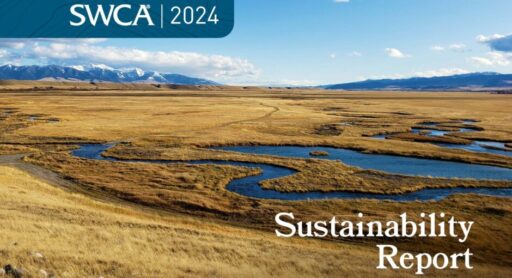
At SWCA, sustainability means balancing humanity’s social, economic, and environmental needs to provide a healthy planet for future generations.
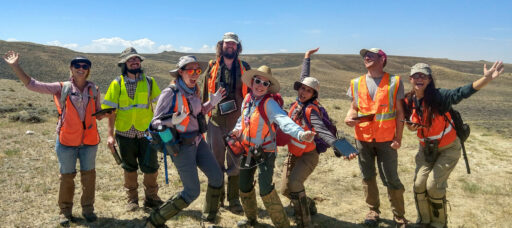
SWCA employs smart, talented, problem-solvers dedicated to our purpose of preserving natural and cultural resources for tomorrow while enabling projects that benefit people today.
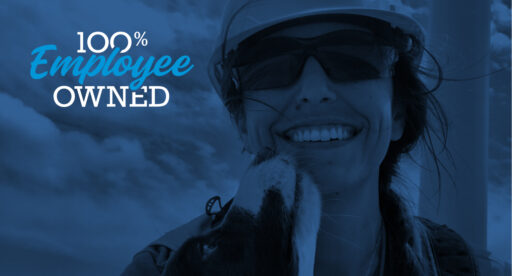
At SWCA, you’re not just an employee. You’re an owner. Everyone you work with has a stake in your success, so your hard work pays off – for the clients, for the company, and for your retirement goals.
Treasured Trash: Preserving an Unexpected Time Capsule of Utah Railroad History
As the Utah Transit Authority (UTA) began construction on its Depot District Clean Fuels Tech Center (the Depot) west of downtown Salt Lake City, archaeologists and crews expected to excavate gigantic concrete structures.
Siena joined SWCA in 2021, helping bring the company’s voice to life through thoughtful, creative content as a Marketing Content Developer. She collaborates with teams across the world to turn big ideas into clear, engaging stories for social media, the web, and beyond. Whether she’s writing a headline or planning a campaign, she keeps environmental insight and integrity at the center of every piece—one carefully-crafted pun at a time.

As a Registered Professional Archaeologist (RPA), Ms. Christine Michalczuk meets the Secretary of the Interior Standards (36 Code of Federal Regulations 61) in archaeology and has conducted archaeological work throughout the states of California, Nevada, and Utah. She is an experienced project manager who has worked on numerous cultural resources inventory projects through various on-call contracts, as well as successfully managed various development projects in the hydro, alternative energy, telecommunication, utility, and energy sectors, to assist those clients with their historic preservation and compliance processes. Ms. Michalczuk currently manages SWCA’s cultural resources on-call support for two transportation clients with project-specific contracts that provide various types of environmental document support. She has led the cultural efforts for the Yellowstone Diversion environmental assessment project, as well as the cultural resources coordination for the Spanish Fork Reach Cultural Resources monitoring project for the Central Utah Water Conservancy District.
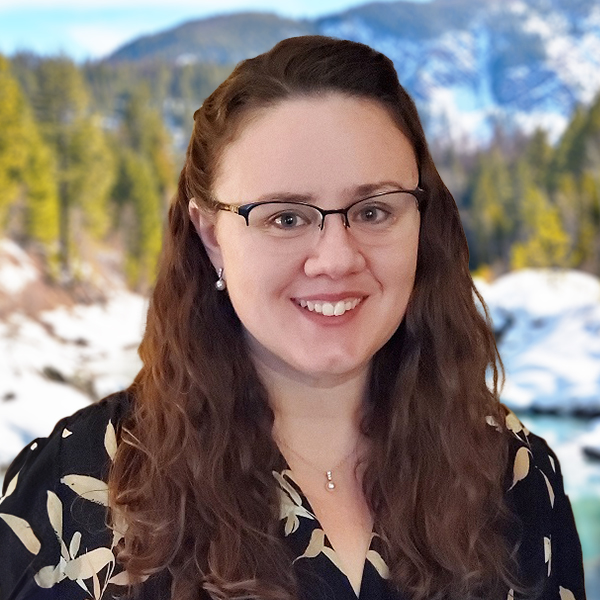


As the Utah Transit Authority (UTA) began construction on its Depot District Clean Fuels Tech Center (the Depot) west of downtown Salt Lake City, archaeologists and crews expected to excavate gigantic concrete structures. This new hub for UTA’s partially electrified bus fleet was being built on approximately 1.4 acres of the main railyard that served the historic Denver & Rio Grande Western Railroad from the late 1800s to the early 1900s.
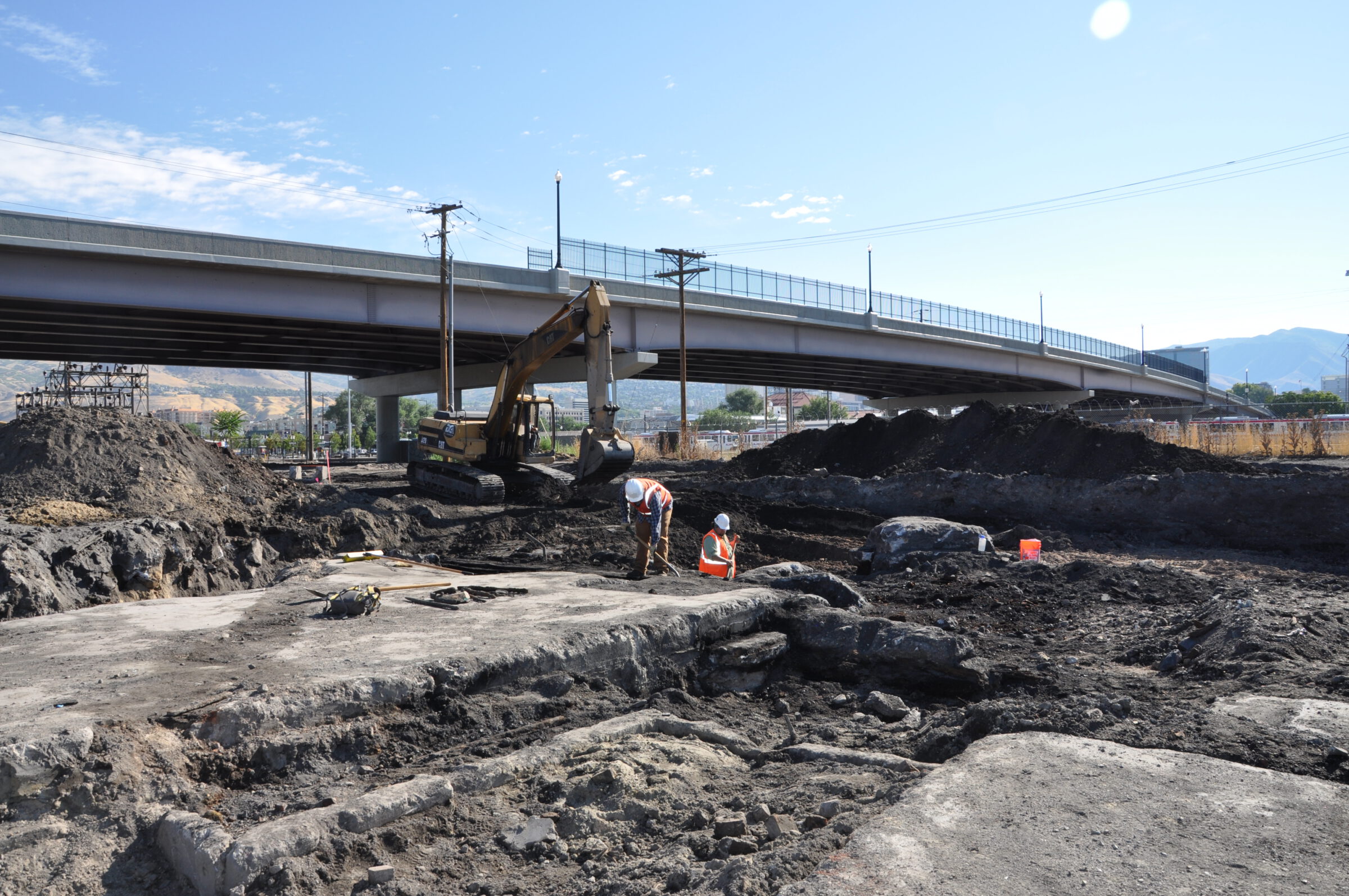
SWCA crews excavate concrete features of the historic Denver & Rio Grande Western railyard in 2014 in Salt Lake City’s Depot District neighborhood.
Turntable and roundhouse? Check!
Massive boiler and cistern? Check!
And…a cache of small artifacts located over three feet below ground? Pump the brakes!
While digging a utility trench in November 2020, workers uncovered two sets of raised railroad tracks with a trash pit underneath them near what was once the railyard’s historic oil house. When a cultural resources detection like this happens, construction pauses and people come together.
Supporting UTA with construction monitoring and excavation of several archaeological features on this site since 2014, SWCA archaeologists jumped at the opportunity to dig into this unique trash pile. UTA’s project manager, Buffie Chournos, responded enthusiastically despite the temporary disruption to the Depot’s construction schedule. Chris Merritt, the Utah State Historic Preservation Officer and a historic railroad expert, dropped in regularly to visit the team throughout every stage of excavation and analysis. The excitement was contagious — even the construction foreman and his crew were eager to help document and unearth artifacts.
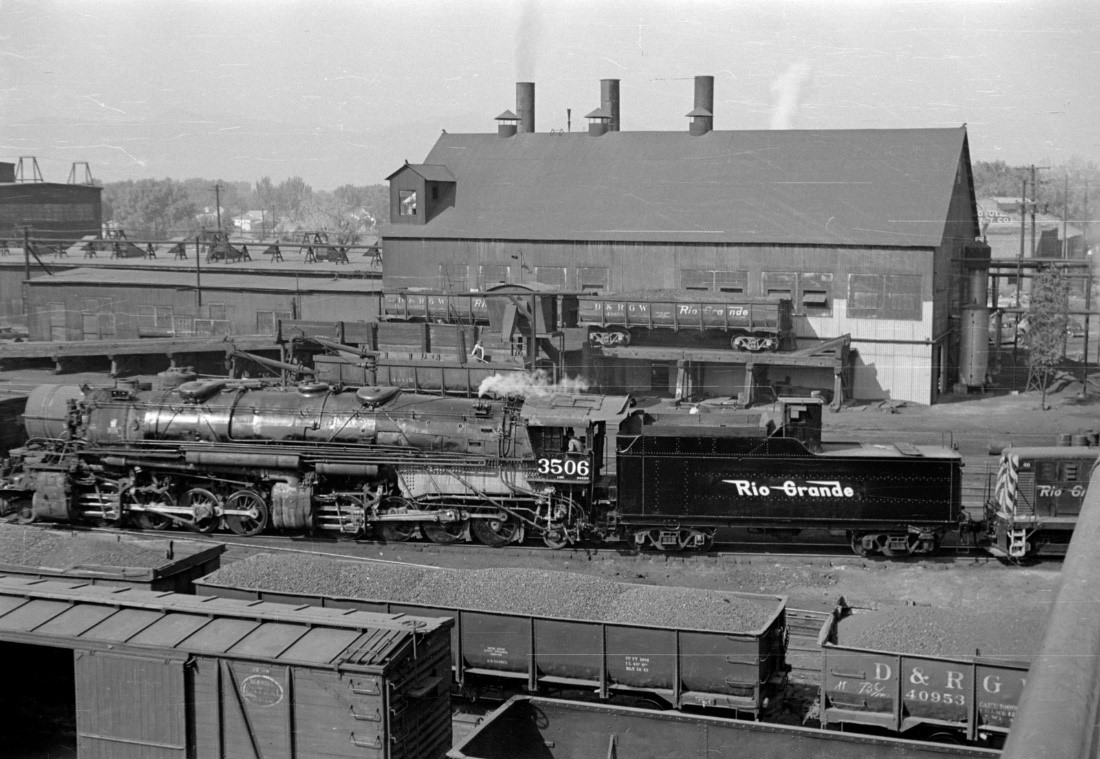
The historic Denver & Rio Grande Western railroad facilities. Image credit Utah Transit Authority.
“I have a personal relationship with Utah’s railroad history because several members of my family have worked for the Union Pacific Railroad here in Salt Lake City,” Christine Michalczuk, a career archaeologist and project manager at SWCA, explains. “I’ve enjoyed sharing a connection to our state’s history through this project. There was a little something there that I could share with everyone: the SWCA team, the Utah Transit Authority, the Utah State Historic Preservation Office, and the construction crew.”
Amidst the initial thrill, an important question lingered: what is the best way to preserve this slice of history while enabling the Depot construction to move forward?
Moving quickly, SWCA archaeologists collaborated with mechanical excavation experts to unearth a one-cubic-meter section of the trash pile located within the utility trench. Because SWCA had provided preconstruction training materials to the crew ahead of time, the deposit was left largely intact once unearthed.
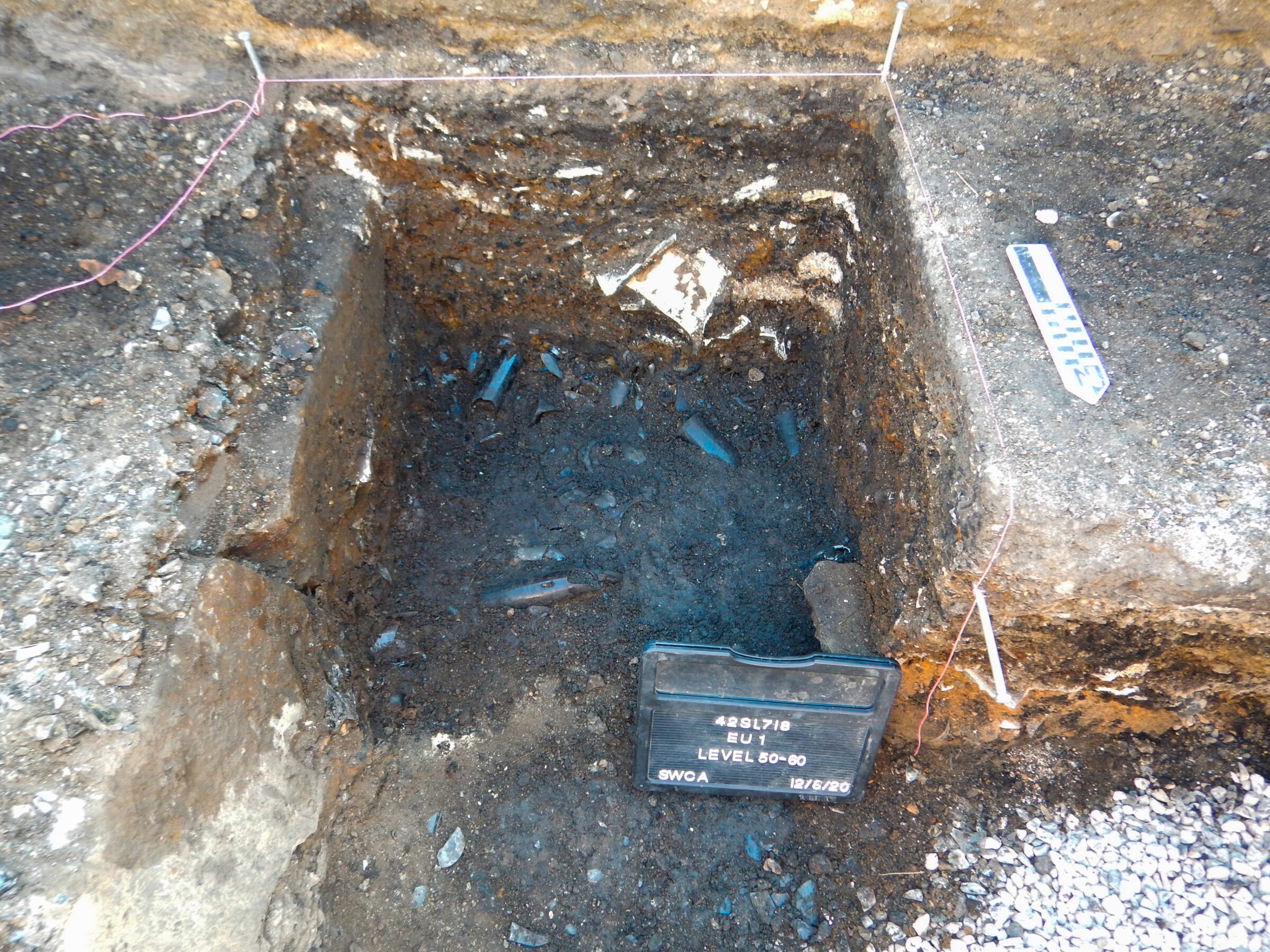
The one-cubic-meter excavation area in the utility trench was packed with railroad artifacts.
In all, the team collected 9,508 artifacts! Transporting the artifacts to the SWCA laboratory in Salt Lake City, our archaeologists cleaned, analyzed, photographed, and cataloged the collection. The database contains pertinent information on each artifact, including age and function.
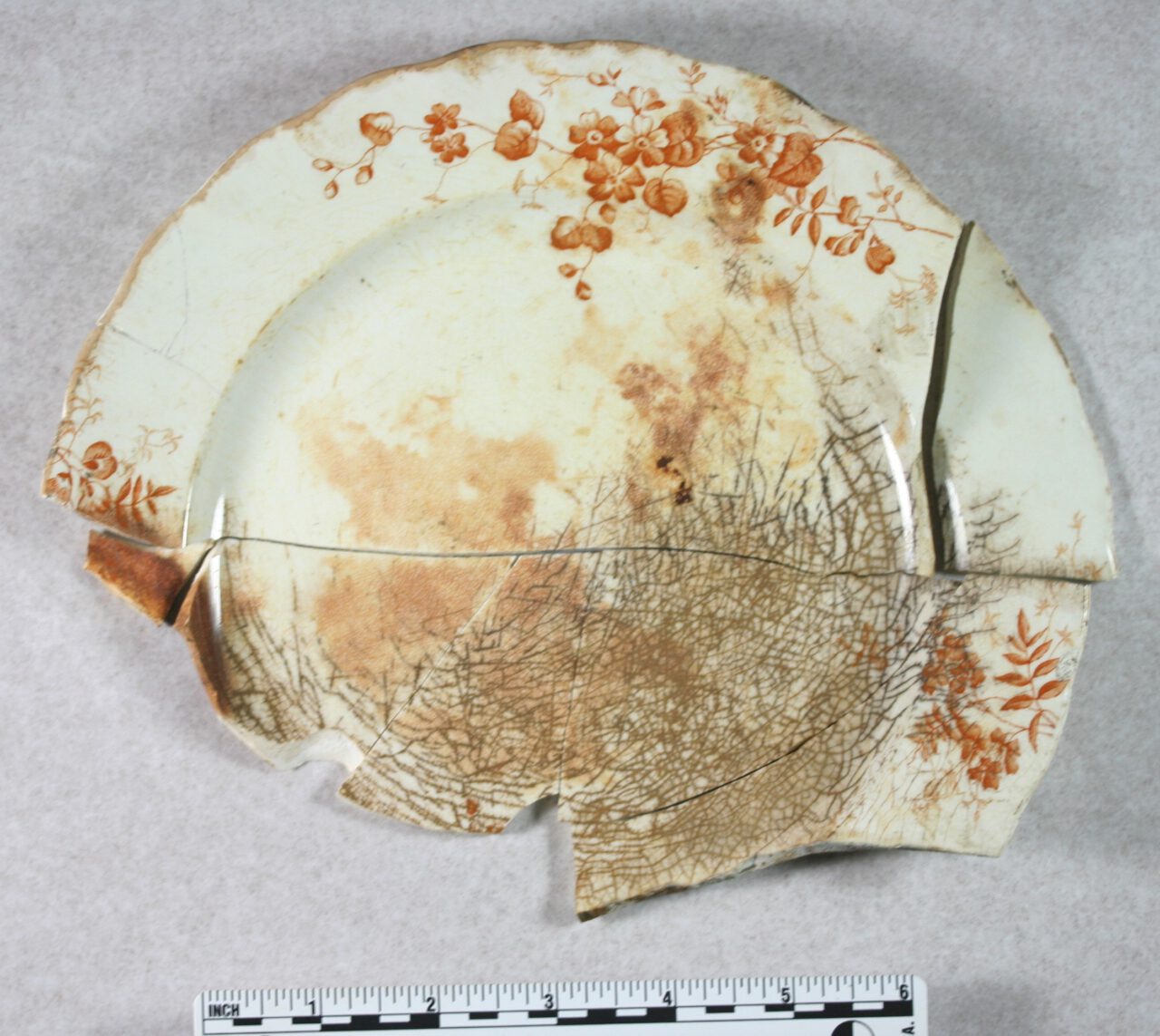
A broken dinner plate with orange transfer-print flowers, made during the 1890s. Ceramic dinnerware was sophisticated at this time, especially on a train.
SWCA supported UTA by developing a technical report that summarized the archaeological investigation and by responding to mitigation and compliance processes. Cultivating strong relationships between agency stakeholders and supporting UTA through all stages of the identification and reporting enabled the utility trench construction to resume swiftly.
With all archaeological data on the table — and construction operations back on track within days — the fun could begin. Time to put the puzzle pieces together!
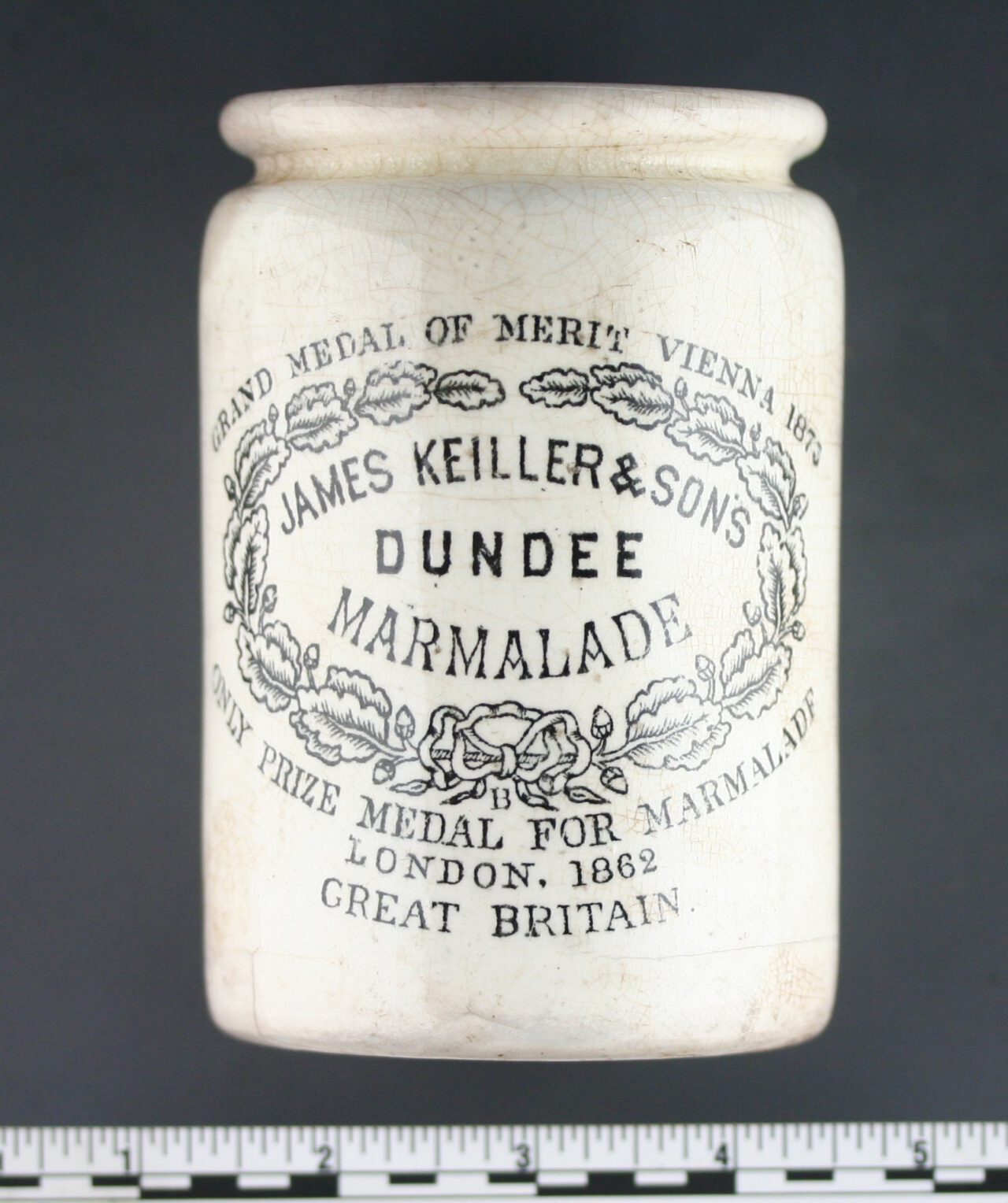
A small marmalade crock dating to the 1870s or 1880s.
Remember how crews unearthed two lines of railroad tracks next to the trash pit? Those tracks provided a clear start date to the timeline. The buried tracks were narrow gauge, and archaeologists knew that the Denver & Rio Grande Western Railroad converted its tracks to standard-gauge width in 1890. It seems like once the old rails were abandoned, the area underneath became a perfect place to throw trash, possibly for decades, into the 1920s. Then, the dump site was buried and forgotten, inadvertently creating a snapshot of railroad life that is rarely recorded in written history.
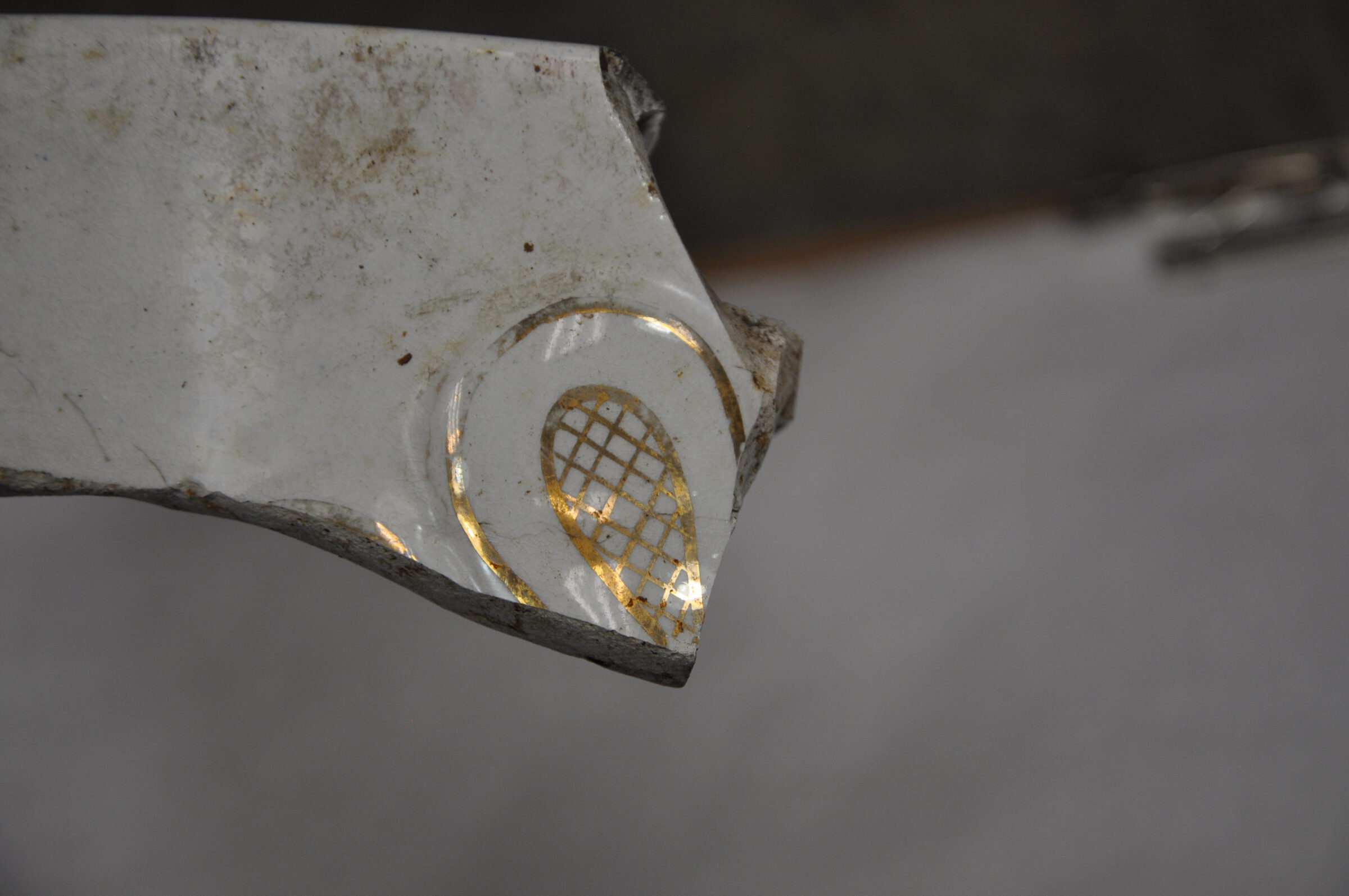
Hand-painted gold decoration on a toilet bowl rim characterizes upper-class lifestyles during the Gilded Age.
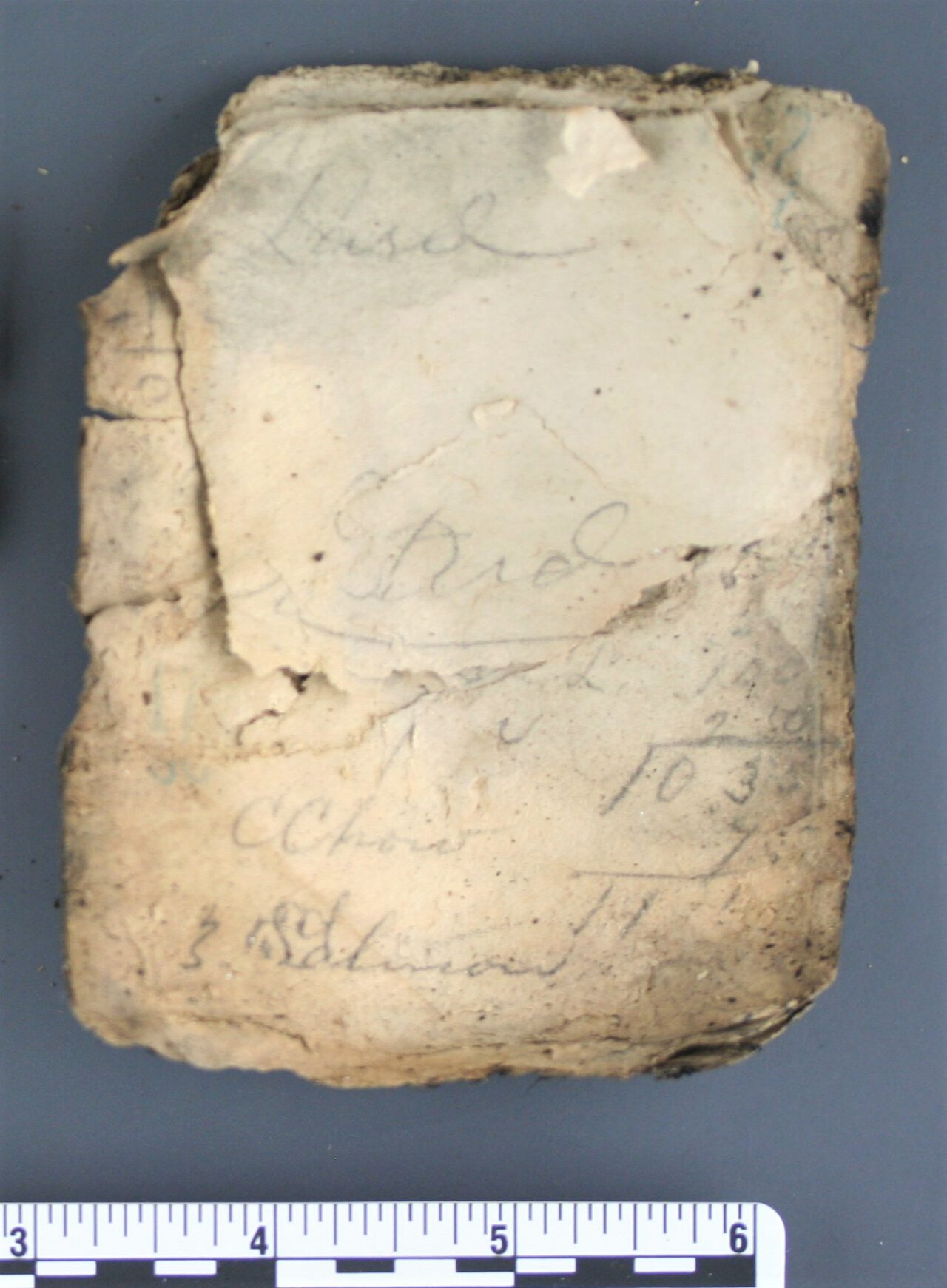
The top of one page says “Lard” and “Ord”. The exposed bottom of a page underneath lists “CChow” (an abbreviation for the pickled relish chow-chow) and “Salmon” with a running tally of prices.
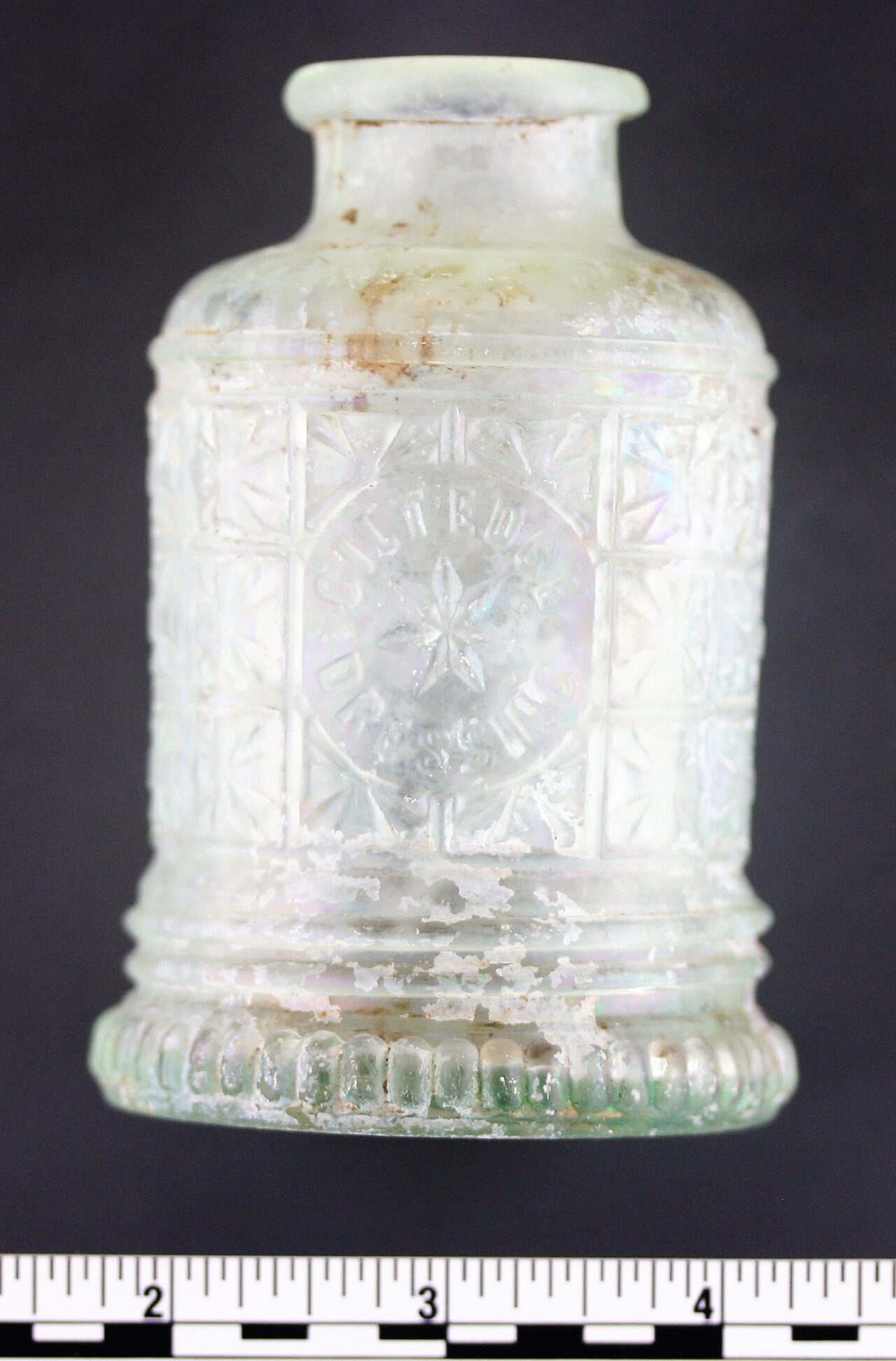
A decorated bottle of “Gilt-Edge Dressing”, a white shoe polish intended for ladies’ shoes. After an overnight journey, people wanted to make sure they arrived at their destination feeling fresh and looking their best.
“This was not a standard resource detection. My investigative research went in several directions while wrapping my head around what this cache of artifacts meant,” explains Tiffany Collins, an assistant project archaeologist and historical researcher at SWCA. “Why was the passengers’ trash discarded next to an oil house? What do the notebook pages represent? Ultimately, what does this site tell us about people’s lives? Developing possible answers to the unexpected elements is what I love most about my job.”
In the history books, the United States during the 1890s to 1920s is often associated with political corruption, rapid industrialization, the extreme wealth of a few families, exploitation of immigrant labor, and turmoil as the nation reoriented itself for several decades in the aftermath of the Civil War. Although many people moved from farmland to cities after the Second Industrial Revolution, others used transcontinental railroads to get away from it all and settle out West. Immigrants from countries such as China, Mexico, Italy, and Greece traveled to Utah to work on the railroads during this time period, and Africans and African Americans commonly worked as porters and waiters on trains. Railroading also became popular for leisure, taking people to scenery, heights, and speeds they had never before experienced.
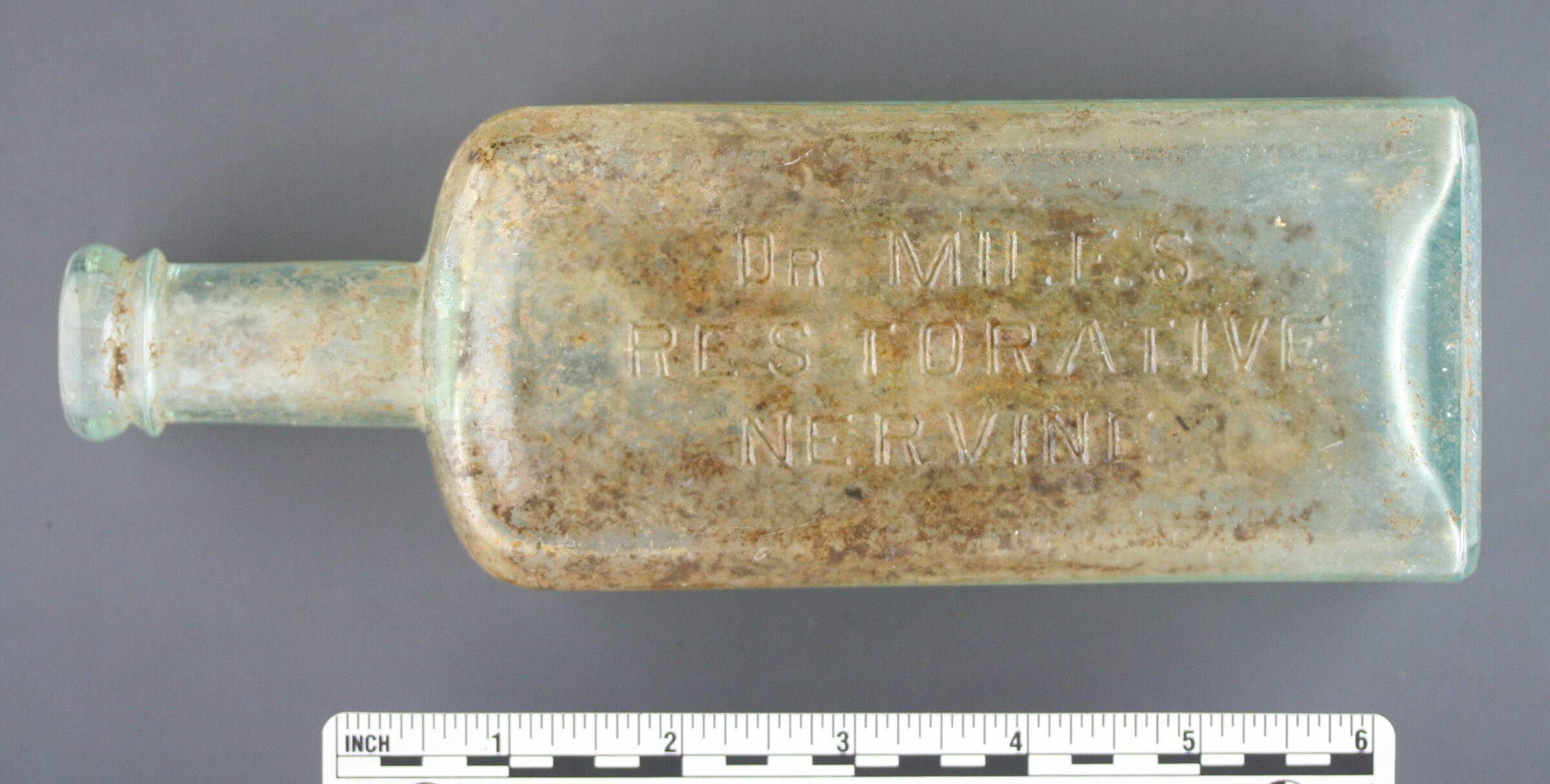
Patent medicines were common in the late nineteenth century, including “Dr. Miles Restorative Nervine”, which was first produced in the 1880s. Many of these medicines were “snake oil” remedies whose benefits were not scientifically proven.
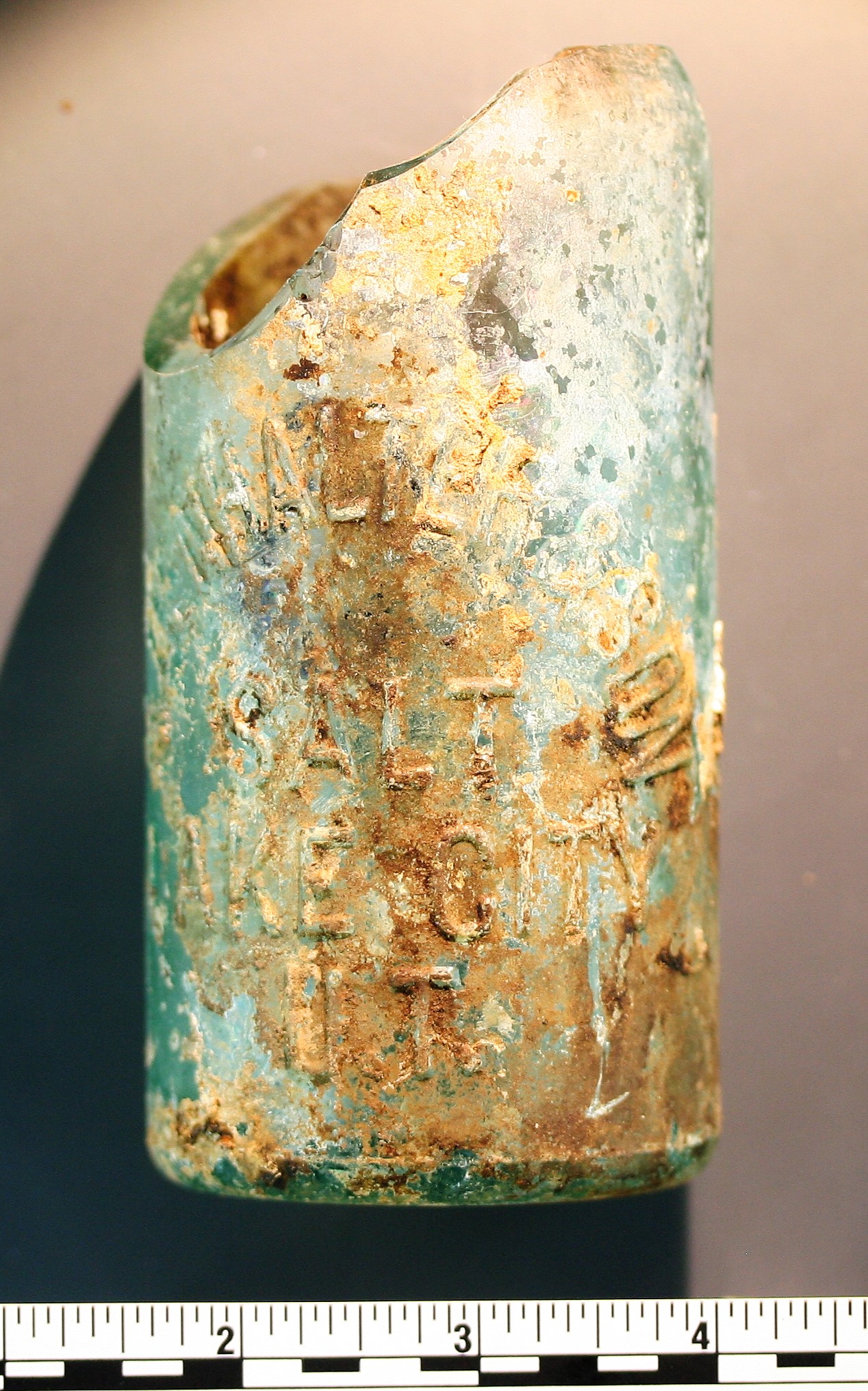
A soda water bottle base has the label “Denhalter & Son, Salt Lake City, U.T.” The “U.T.” stands for Utah Territory, because the bottle dates to before Utah became a state in 1896.
Although the construction for the Depot came to a temporary stop back in 2020, the project moved forward once the archaeological excavation was complete. Now in 2023, the construction of a key bus facility in the Depot is nearly finished. UTA plans to display several of the artifacts from this project in their main lobby while putting the others into safe storage. At the end of the day, everyone is pleased that this cultural resource revelation brought to light more of Utah’s railroad history, with artifacts and stories to share with generations to come.
SWCA’s Salt Lake City office would like to personally thank key cultural resources partner, Certus Environmental Solutions, for bringing our team onto the UTA Depot project in 2014.
To learn more about this project, please contact Christine Michalczuk.